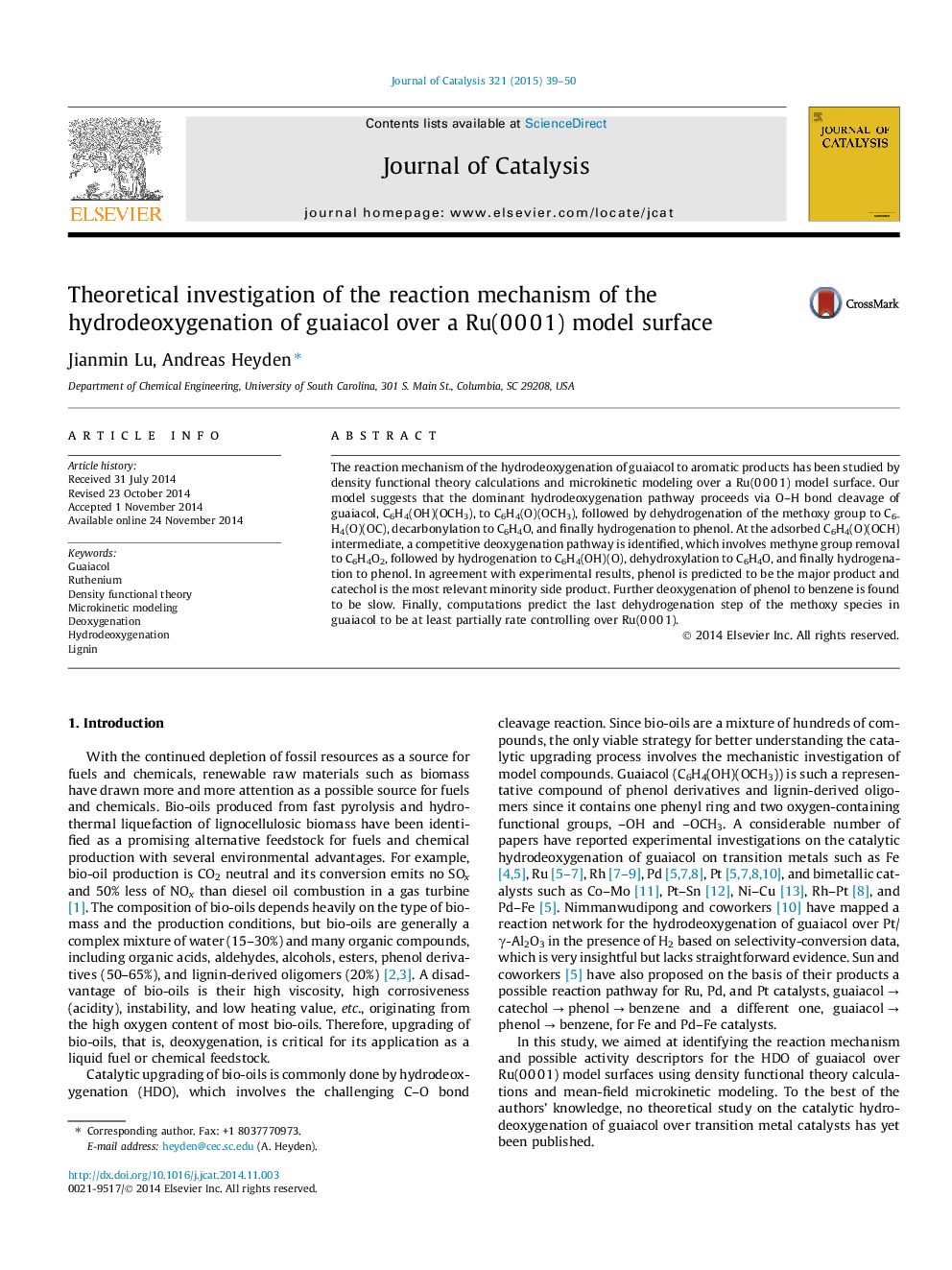| Article ID | Journal | Published Year | Pages | File Type |
|---|---|---|---|---|
| 60924 | Journal of Catalysis | 2015 | 12 Pages |
•First, principles based microkinetic model developed for the HDO of guaiacol on Ru.•HDO of guaiacol occurs by dehydrogenation of the methoxy group and decarbonylation.•Phenol is the main reaction product, and catechol is the most relevant side product.•Benzene production occurs primarily by partial phenyl ring hydrogenation.
The reaction mechanism of the hydrodeoxygenation of guaiacol to aromatic products has been studied by density functional theory calculations and microkinetic modeling over a Ru(0 0 0 1) model surface. Our model suggests that the dominant hydrodeoxygenation pathway proceeds via O–H bond cleavage of guaiacol, C6H4(OH)(OCH3), to C6H4(O)(OCH3), followed by dehydrogenation of the methoxy group to C6H4(O)(OC), decarbonylation to C6H4O, and finally hydrogenation to phenol. At the adsorbed C6H4(O)(OCH) intermediate, a competitive deoxygenation pathway is identified, which involves methyne group removal to C6H4O2, followed by hydrogenation to C6H4(OH)(O), dehydroxylation to C6H4O, and finally hydrogenation to phenol. In agreement with experimental results, phenol is predicted to be the major product and catechol is the most relevant minority side product. Further deoxygenation of phenol to benzene is found to be slow. Finally, computations predict the last dehydrogenation step of the methoxy species in guaiacol to be at least partially rate controlling over Ru(0 0 0 1).
Graphical abstractFigure optionsDownload full-size imageDownload high-quality image (82 K)Download as PowerPoint slide
